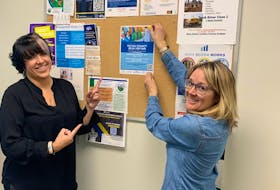I don’t mean that you should yell, “buy my stuff” at your customers, but you should definitely be telling them what the next step is in their journey toward making a purchase.
Companies provide this type of direction to customers by using what is commonly referred to as a “call-to-action,” or CTA for short.
You probably know what a CTA is, but just for kicks: a CTA is an image or line of text that prompts someone to take a specific action.
This action can be registering for an event, purchasing a product or downloading an ebook, to name a few.
WordStream reported that businesses who started using a CTA in their emails increased the number of clicks to their website by 371 per cent.
Most businesses already know the power of using CTAs but aren’t getting the results they want.
This typically happens because of the one-size-fits-all approach businesses use for CTAs by pasting the same “Click Here” button on every webpage, blog and email.
“A CTA needs to be coupled with a compelling reason to take that action,” says Andrew Button, founder and CEO of CO3 and Mashup Lab in Bridgewater.
Button explains that “the text above a CTA is really important and should focus on the problem you are solving for a particular customer at a specific stage in the buyers’ journey.”
Whether you’re looking to improve the results of existing CTAs, or you are the new kid on the call-to-action block, here is a quick checklist for creating an effective CTA:
- Know your audience — A CTA you would use for an existing customer wouldn’t be the same CTA you would use for someone that hasn’t bought from you yet. Customize your CTAs for each type of customer and how close they are to making a purchase.
- Make them pop — To get people to click on your CTA, they first need to notice it. The colour of your CTA should contrast the colour of your website and be large enough not to miss.
- Communicate value — This speaks to Button’s point about focusing the text above a CTA on solving a problem. The more descriptive you are about the benefits your CTA offers, the more likely the reader is to take action.
- Highlight benefits — Phrases like “Read More” gives the viewer the impression that they have to do work once they click on the CTA. Instead, use phrases that emphasize the benefits you’re offering, such as, ‘Learn How to Boost Your Sales by 30 per cent Today.’
To further optimize your call-to-action, try changing one feature at a time. Change the messaging, where your CTA is placed or even the button colour. By only making one change at a time, you can compare results and craft engaging CTAs that your target audience can’t help but click on.









